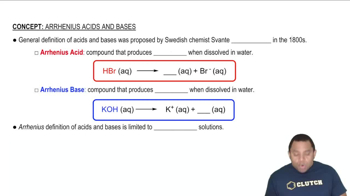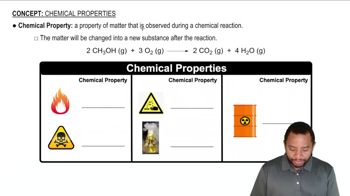Here are the essential concepts you must grasp in order to answer the question correctly.
Acid-Base Chemistry
Acid-base chemistry involves the study of acids, bases, and their reactions. Acids are substances that donate protons (H⁺ ions), while bases accept protons. Understanding the properties of acids and bases is crucial for identifying their corresponding anhydrides, which are formed by the removal of water from the acid.
Recommended video:
Arrhenius Acids and Bases
Anhydrides
Anhydrides are compounds formed by the removal of water from an acid. For example, the anhydride of sulfuric acid (H₂SO₄) is sulfur trioxide (SO₃). Recognizing the relationship between acids and their anhydrides is essential for solving the given problem, as it requires knowledge of how to derive anhydrides from specific acids.
Chemical Nomenclature
Chemical nomenclature is the system of naming chemical compounds. It is important to understand the naming conventions for acids and their anhydrides, as this knowledge helps in identifying the correct anhydride for each acid listed in the question. Familiarity with common acids and their corresponding anhydrides is key to accurately answering the exercise.
Recommended video:

 Verified step by step guidance
Verified step by step guidance
